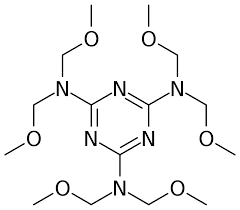Ethyl acetate is an important organic compound that is widely used in industry and our daily lives.
Chemical Properties and Production
Ethyl acetate has the chemical formula C4H8O2. It is a colorless, flammable liquid with a characteristic pleasant smell. Ethyl acetate is produced industrially through a reaction between ethanol and acetic acid in the presence of an acid catalyst. The esterification reaction allows ethanol and acetic acid to combine, removing a water molecule in the process. The global production capacity of ethyl acetate is over 3 million tons per year. China is currently the largest producer, followed by Western Europe and North America. The purity of commercially produced ethyl acetate is usually above 99.5%.
Applications in Manufacturing
Due to its pleasant smell, low toxicity and low cost, ethyl acetate finds numerous applications in manufacturing industries. It is widely used as a solvent for surface coating applications such as lacquers, nail polish removers and paint thinners. In the pharmaceutical industry, it is used as a solvent for production of certain medicines and to clean medical equipment. Ethyl acetate is also commonly used as a reaction solvent and extractant in chemical syntheses. It has increasing use as a green solvent in various chemical production processes as a replacement for more toxic compounds. The food industry uses ethyl acetate in flavorings and fragrances due to its appealing scent.
Uses in Daily Products
Many consumer products that we encounter in our daily lives contain ethyl acetate as a key ingredient. Nail polish and nail polish removers use it as the main solvent. Colognes, perfumes and air fresheners rely on the sweet smell of ethyl acetate to impart fragrance. Cigarette filters and papers are treated with ethyl acetate solutions. It is also present in some glue formulations, marking pens and correction fluids. The pleasant aroma of ethyl acetate makes it suitable for use in various aroma and scented products.
Safety and Regulations
While Ethyl Acetate has relatively low toxicity when ingested or absorbed through the skin, it can be hazardous if inhaled in high concentrations or allowed prolonged skin contact. The primary routes of exposure are through inhalation of vapors and eye or skin contact with liquids. Short term inhalation can cause dizziness, nausea and irritation of the nose and throat. Prolonged and repeated exposure may potentially damage the liver and kidneys. Therefore, adequate ventilation and protective equipment are necessary when working with ethyl acetate. Regulatory agencies have established occupational exposure limits and safety standards for its production and use in manufacturing. Proper handling and disposal methods must be followed to prevent environmental contamination.
Alternative Production Methods
With growing environmental regulations, researchers are exploring more sustainable methods for large-scale production of ethyl acetate. One promising technique employs enzymatic catalysis using lipases and esterases, avoiding use of traditional acid catalysts. Microbial fermentation utilizing genetically engineered bacteria or yeast is another area of active investigation. These ‘green’ approaches aim to replace conventional chemical synthesis routes that generate waste products. Development of economically viable bio-based technologies could help meet rising demand for ethyl acetate in an environmentally friendly manner.
Ethyl acetate has truly become an essential industrial chemical due to its wide array of applications. Its pleasant odor, low cost and relatively low toxicity have made it ubiquitous in manufacturing, consumer products and our daily lives. With global demand projected to grow further, continuous optimization of production methods will be important from economic and environmental standpoints. Sustainable alternatives utilizing biocatalysts hold promise to supplement traditional chemical synthesis in the future.
*Note:
1. Source: Coherent Market Insights, Public sources, Desk research
2. We have leveraged AI tools to mine information and compile it




